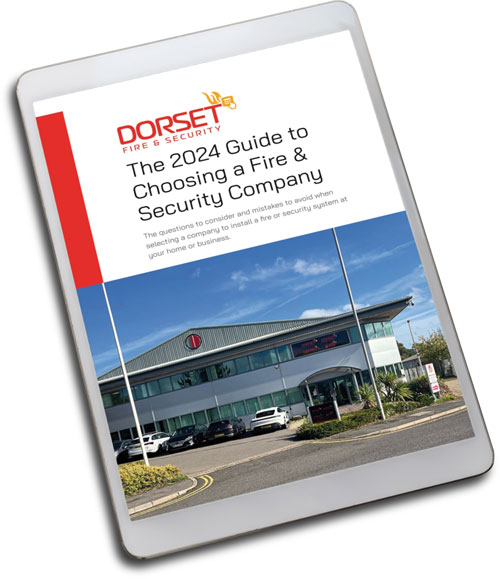Menu
Installing Fire Alarms Systems and importantly keeping them properly maintained, is vital to ensuring the protection of human life, property and business survival. Every second saved counts, so early detection will help in the recovery due to minimising the destruction of property.
The cost of false fire alarms to businesses and the Fire Brigade alike are very high and the risk of potential loss of life is immeasurable. It is therefore of huge importance to choose the right company to help you select the right fire alarms for each building that needs to be protected.
Our highly experienced staff will ensure that the system chosen will meet your specific requirements and will meet BS5839 part 1 2017 and the European Standard EN54 thus ensuring you remain legally compliant.
Dorset Fire & Security offer one of the widest selections of fire and security products to customers throughout Bournemouth, Poole, Winchester and the surrounding areas. Have a look at all of our Fire and Security services here.
Conventional alarms revolve around dividing the building into a number of areas called zones. Detectors and call points within each zone are then wired on a dedicated separate circuit.
If a detector or call point is triggered, the panel can identify which circuit contains the triggered device and thereby indicate which zone the fire alarm has come from. The indicated zone can then be manually searched to locate the triggered device.
Addressable alarms overcome the limitations of conventional ones as each fire detector or call point is electronically coded with a unique ‘address’ programmed into the device during installation.
The control panel uses the unique address to communicate with the connected addressable devices. Interrogating each device can determine its status, if it’s working correctly and the amount of smoke/heat that its currently sensing. This can then pinpoint exactly which device is being triggered in an alarm or fault status.
These types of systems are purely for the protection of property and fall into two classifications, P1 and P2. P1 protects the whole building, P2 is installed in defined parts of the building only.
The objective of a category P fire alarm is to provide the earliest warning of a fire to minimise the time taken from ignition of a fire to detection and the subsequent attendance by the fire services, minimising loss to the property.
Life protection systems can be divided into various categories, L1, L2, L3, L4, L5.
L1 Automatic Fire Detection (AFD) should be installed into all areas of a building.
L2 provides Automatic Fire Detection (AFD) as defined in L3 as well as high risk or hazardous areas. Examples of this could be kitchens, boiler rooms, sleeping risk, storerooms if not fire resistant or if smoke could affect escape routes.
L3 Automatic Fire Detection (AFD) with smoke detection should be installed on escape routes with detection in rooms opening onto escape routes.
L4 provides Automatic Fire Detection (AFD) within escape routes only.
L5 is installed in a building where a specific risk has been identified. An example of this would be if there was an area of high risk that requires detection the category would be L5/M.
We have a reputation built on excellence from our products to our employees and we are certified to the highest standards. We pride ourselves on being prompt and reliable so contact us today to discuss your security requirements with an expert.
Please fill out our contact form below and we will get back to you shortly.
